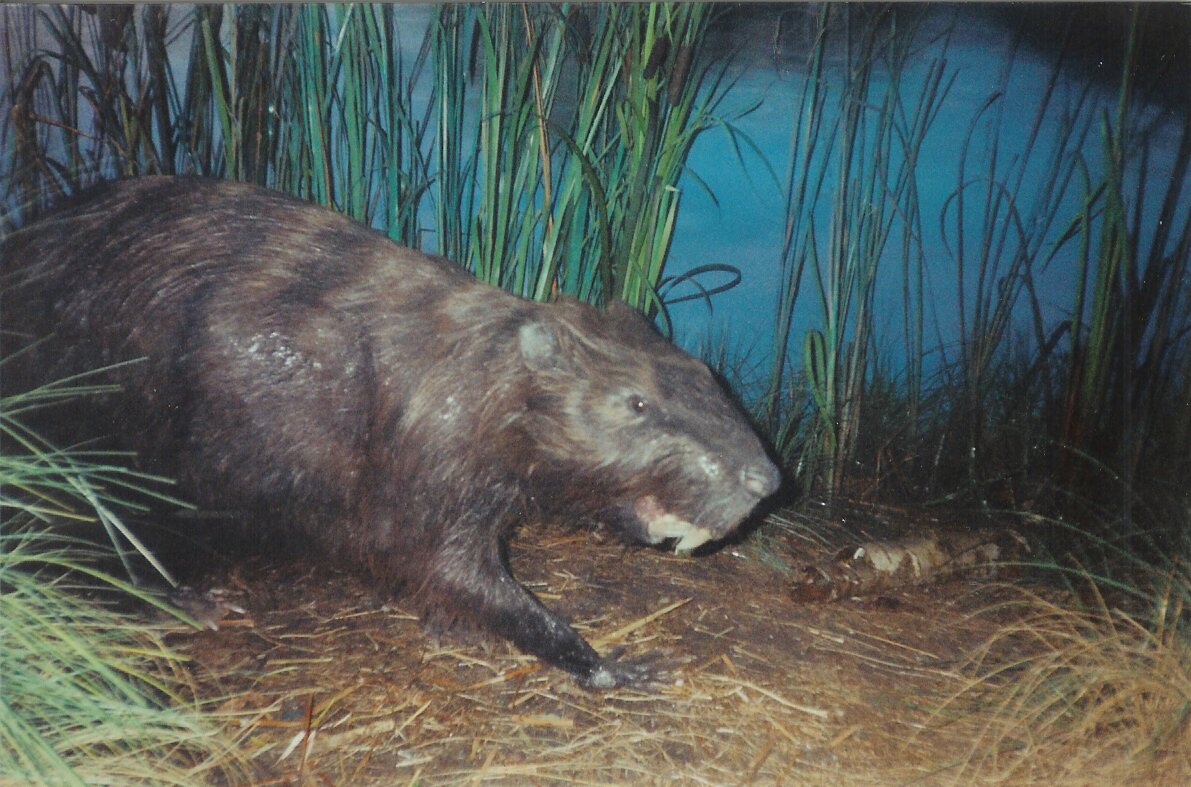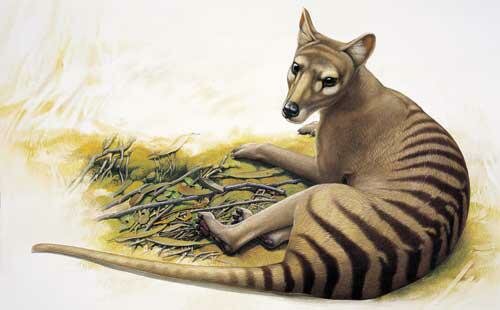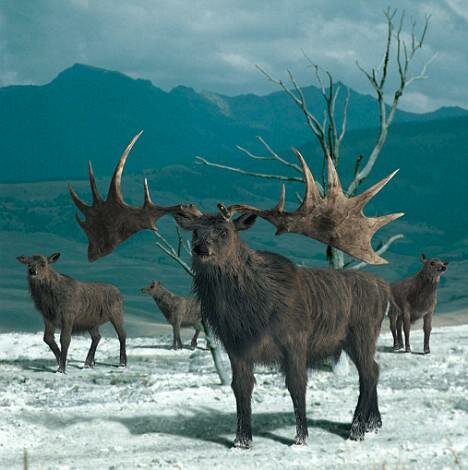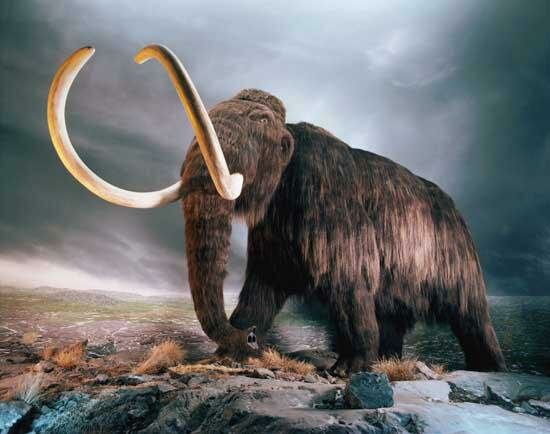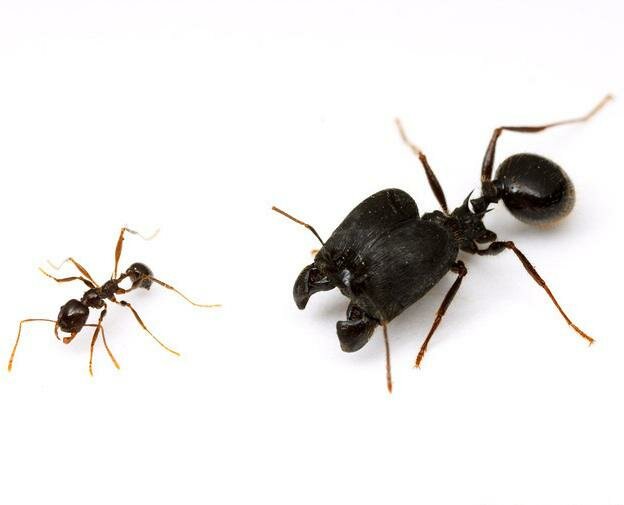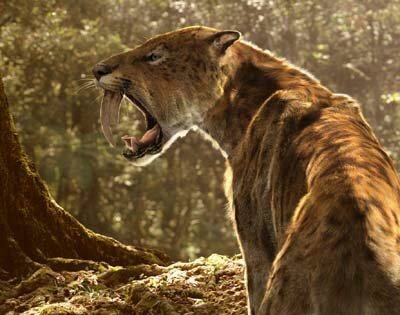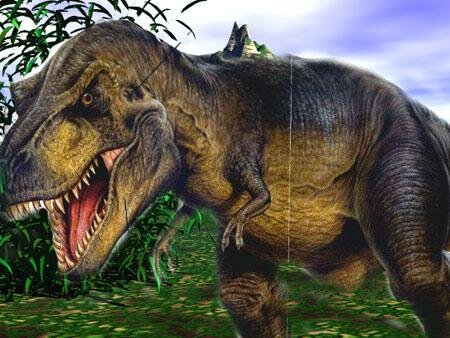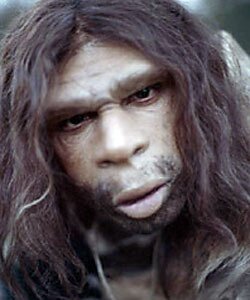Wouldn’t it be wonderful to have your own unicorn, winged horse, seven foot long centipede or a dragon fly with a thirty inch wingspan? Unfortunately, none of these are possible because some are mythological and others were the product of environmental conditions different to today.
However, through the technological wonders of cloning it is theoretically possible to recreate some of the most ancient and amazing creatures that have ever lived on the earth. To achieve such a goal it is essential that there be some form of DNA available and that environment is able to support the product of the process. So, the following list is the top ten Clonable Ancient Creatures.
10. Castoroides
In a world where weather patterns and water supplies seem less reliable every year, the ability to create quick and effective water storage would be a benefit to most communities. For this reason an animal that could help building and removing such dams would be an ideal addition to any local water utility.
Therefore, the cloning of Castoroides should be a priority for all environmental scientists. Castoroides are most easily described as enormous beavers. They lived between 1.4 million and ten thousand years ago and grew to a height of eight feet (2.4 m). Their incisor teeth could be as much as six inches (15cm) in length, although they weren’t as sharp as the modern, smaller version.
At the McMaster University, Hamilton, Canada, the idea of cloning a giant beaver has been discussed and geneticists can see methods that would make this possible. Apparently the capybara, a semi-aquatic rodent from South America and the biggest rodent in the world, is the best option as a host for the Castoroide given that it about half the mass of the extinct creature.
As sensational as it would to introduce a beaver that could stand two feet taller than most men and the interest it could revive in Rocky and Bullwinkle, there are already groups cringing at the thought of reintroducing present day beavers to some countries. Perhaps throwing a Castoroide into the mix would be biting off more than could be chewed.
9. Elephant Bird
It is worth noting that the Elephant Bird has been extinct for less than four hundred years. Against some of the other creatures on this list, it could be argued that it doesn’t fit the criteria of an ancient creature. That is until it’s noted that the Elephant Bird was alive for around 85,000,000 years before its loss in the seventeenth century.
As one of the largest birds of its time, the Elephant Bird stood over ten feet (3m) in height and was an ancestor to many of the flightless birds we know today, such as the ostrich and emu. The eggs of the Elephant Bird were up to 39 inches (1m) in circumference and 13 inches long. They had a volume of approximately 160 chicken eggs.
It is these magnificent eggs that make the potential for cloning the Elephant Bird encouraging. Eggs are designed to protect the chick inside and successfully block oxygen and water, both of which can damage DNA. They also protect the contents of the egg with antimicrobial chemicals and these circumstances make maintaining the genetic material of the egg sustainable.
The experience of looking an ostrich in the eye and marveling a little at the size of the bird would pale against the opportunity to look up at a creature that may have an eighty-five million year history.
8. Thylacine (Tasmanian Tiger)
Despite its very recent extinction in 1936, the Thylacine or Marsupal Wolf has an ancient history. There is evidence to support the Thylacine’s presence early in the Miocene period, which would mean that it was hunting as far back as twenty million years ago.
Using parts of a Thylacine that had been preserved in ethanol for almost one hundred and fifty years, scientists have begun work on creating enough DNA to allow cloning. Should this come to fruition, the close relative to the Thylacine, the Tasmanian Devil, could be used as the provider of an egg and the surrogate mother.
But it wouldn’t just be sentiment that would see this creature cloned. The Thylacine was at the top of the food chain in Australia, both mainland and Tasmania. While settlers were busy killing off native flora and fauna, they were also introducing species that weren’t part of the naturally ecosystem, such as rabbits, foxes and cats. The carnivorous nature of the latter two has had a devastating effect on the native animals of Australia.
By reintroducing a marsupial carnivore, the battle against introduced species could take a significant turn as there currently are no predators for these animals. The Thylacine or Tasmanian Tiger could make a huge difference in restoring a balance to the bush.
7. Irish Elk
Animals of great proportion are always fascinating, particularly when they bear resemblance to more petite beasts of the present. The fallow deer is a quaint, quick and quiet animal, similar in many ways to the Disney’s “Bambi”. The male stands all of thirty-seven inches (95cm) at the shoulder and has antlers that are more picturesque than imposing.
By comparison, the Irish Elk, which was actually a deer, grew to stand six foot and nine inches (2.1m) at the shoulder. It weighed up to 1,300 pounds (600kg) and the species lived for almost 400,000 years, dying out about 7,700 years ago. Most impressive were the antlers of the Irish Elk, which regularly measured twelve feet (3.6m) across.
Another candidate that has been deep frozen in the permafrost, and there have been plenty of remnants of the Irish Elk for scientists to gather DNA. Scientists have found that there is enough similarity between the ancient animal and its modern day cousin to provide the technical requirements for the task.
While it would be disturbing to breed such a creature only to have its head adorning a bar somewhere, there are numerous other reasons to see its return. But, if only for the sheer grandeur of having such a terrific beast again roaming the forests and plains of Europe, this creature must be considered for resurrection.
6. Woolly Mammoth
Whether it’s to see if they really do sound like Ray Romano from the Ice Age movies or as a result of our eternal romance with all things pachyderm, the prospect of cloning a Woolly Mammoth is extremely entertaining. Never mind that they would need a playpen the size of a football stadium just for a pair of these creatures and they would be magnificent, mighty and much cuddlier than a standard teddy.
While the idea may seem a little fanciful, the prospect is not completely unreasonable. The frozen bones of these creatures have been found in the Canadian Yukon and have been dated back as far as 11,500 years.
The hemoglobin isolated in the blood extracted from such bones has been studied and genetically sequenced at the University of Tasmania. This has been to discern how these creatures survived the extreme temperatures of the Ice Age, but in the process the evolutionary biologists may well have provide the material to restore this giant of ancient times.
The Woolly Mammoths were estimated to be up to fifteen feet tall (4.5 m) with a coat of hair that grew to more than three feet in length. Their tusks were up to seventeen feet long (5.2 m) and they lived from two million years to about nine thousand years ago.
5. Super Soldier Ants
Although this discussion is about ancient creatures that could be cloned, it is worth including a species that has successfully been raised from extinction through the use of DNA technology. Even though they sound tiny, Pheidole morrisi are a very special type of ant.
These Super Soldier Ants have enormous heads, jaws that are as sharp and hard as steel and the DNA of a 30 to 65 million year old creature. Being attacked by a swarm of them, says United Kingdom officials, would be more dangerous than stumbling into a pond of hungry piranhas.
Of course, the reason the British officials are providing this warning isn’t just a moment of sensationalist advertising. It’s also because the University of Brighton’s “Jurassic Park” project has lost them. They haven’t lost all of them, but they’ve allowed enough to escape that officials think the warning is a good idea.
Yet, there is still a slight amount of pride in the voices of the scientists who have inflicted this new and vicious pest on the rolling meadows of Britain. Let’s hope they’re not offended by the relief in the voices of their neighbors as they say, “Thank God, it’s an island.”
4. Smilodon
Fans of the Flintstones could never walk past the opportunity to see a live Smilodon, or as Fred would know it Sabre-toothed Tiger. These massive cats were four foot and seven inches (1.4m) tall at the shoulder and eight feet and four inches (2.6m) long. They roamed North and South America and only 10,000 years ago there were still a million of them in existence.
Fascinatingly, there are specimens of the Smilodon that were preserved magnificently in the La Brea tar pits near Los Angeles. But the task of gathering DNA from these remains is difficult as the remnants of tar and the effect of it over time has made it impossible so far to isolate a genome sequence.
However, the permafrost in some other areas of the world has been far kinder to science. There is significant optimism that these will provide a more useful source of the vital DNA.
Should that prove successful, the African Lion, rather than a tiger, would appear the best option for an egg donor and a surrogate mother. This is because the Smilodon is actually a cat rather than specifically a tiger.
The name confusion was probably a result of the intimidating twelve inch (30cm) canine teeth that extended almost seven inches (17cm) from the jaw. Even Fred would have had trouble patting that kitty.
3. Tyrannosaurus Rex
There are few more enigmatic and enthralling entrants in this list than the enormous Tyrannosaurus Rex. Measuring forty feet (12m) in length and twenty feet (6m) tall, the “Tyrant Lizard” was a carnivore with a four foot (1.2m) jaw and serrated teeth.
While few of us would want to meet one of these majestic creatures in a dark alley, the prospect of seeing them in their ferocious natural form is enticing. Thanks to the efforts of Mary Higby Schweitzer of North Carolina State University, this experience could be possible with just a little more development in the field of cloning.
Schweitzer recognized that the tissue in the fractured femur of a Tyrannosaurus Rex was far more lifelike than anything of its age had a right to be. There were bone cells, blood vessels and other biological material that should have seeped away millions of years ago. With such substances Schweitzer and many other paleontologists can dream of the cloning of the scariest, best equipped carnivore to ever roam the earth.
2. Neanderthal
Families are strange associations. There are always some members with whom, although we love them dearly, we could never hope to share more than an occasional visit. There are some that we yearn to see, although our affection for them fades quickly when we are in the same room and is the basis of so many awkward holidays and weddings.
It is similar for our whole species and this is why the desire to meet one of our oldest ancestors is so strong. This is the intrigue to see Neanderthal Man resurrected through cloning. Fulfilling this wish may be closer than we think.
The oldest indications of Neanderthals dates back 600,000 years and the most recent are as close as 30,000 years ago. Their body shapes were similar to homo-sapiens, but only around 66 inches (168cm) in height. They had very strong hands and arms and, by the time they reached adulthood, their brains were significantly bigger than modern man’s.
In looking to establish a Neanderthal genome sequence, there are hopes for a draft sequence in the near future. The search for a suitable surrogate for the cloned creature is only hampered by the sensitivity of those who lack the drive to accelerate science. After all, there are over three billion suitable egg donors and surrogates on the planet.
If this is all sounding a little too much like a cross between Frankenstein and Frank-n-furter, then don’t panic. Experts in the field of Neanderthal research and cloning have made it clear that the idea of a surrogate mother is “superfluous”, they would probably just use a petri dish.
1. Apatosaurus
The Apatosaurus has many attributes that make it an ideal contender for restoration through cloning, but the most obvious is probably that it was the most obvious. Being one of, if not the largest land animal to ever roam the earth, this creature had an average length of seventy-five feet (23m) and weighed roughly the same as four elephants.
More commonly known as a Brontosaurus, these herbivores have always been portrayed as the ultimate gentle giant and, with the Tyrannosaurus Rex, are the most recognizable image of life on Earth 150 million years ago.
As for the ability of scientists to clone such a creature, the work that has already been carried out is astounding. Having recognized similarities between the ancient giant and the more modest present day ostrich, the potential of a donor and surrogate was recognized some time ago.
In fact, at the University of Florida, there is already an Apatosaurus incubating. DNA preserved in the eggshells of the beast has been developed into a form that has made cloning possible and could soon begin the first successful experiments, restoring the mightiest animals ever.
